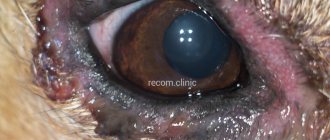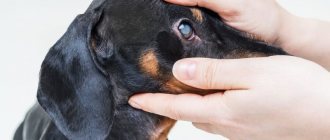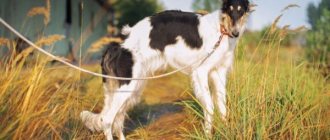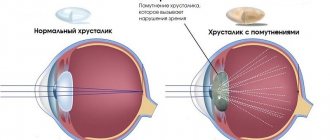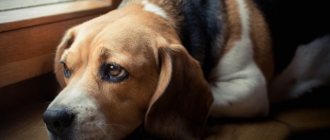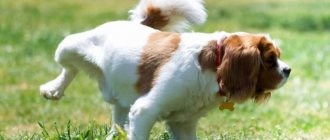Pets are prone to gastrointestinal diseases. Especially common in puppies under one year old. These may be internal non-contagious diseases, manifested by indigestion; infectious, caused by viruses and bacteria; invasive, caused by protozoan parasites and helminths.
Isosporosis is one of the diseases of the gastrointestinal tract that is caused by the parasite Isospora. This is a protozoan that infects the intestinal mucosa. It manifests itself as diarrhea, weakness, perverted appetite, and death.
Several species of isospores and coccidia can live in the intestines of dogs. However, only two cause the disease. These are isospora canis (canine isospore) and isospora felis (cat).
Causes of the disease
The simplest isospores live everywhere. Therefore, dogs can easily become infected by drinking water from a puddle or eating something from the ground. Newborn puppies become infected from their mother by licking their nipples and the surrounding fur.
Infection is possible through intermediate hosts - rats, mice, waterfowl. A dog eats duck, for example, and the isospore oocysts enter the intestine, where they develop into sporozoites. Next they penetrate the intestinal epithelium, destroying cells. All stages of development pass through there and are again released into the environment with feces in the form of oocysts.
Therefore, isospores can be detected in stool in the laboratory.
Who is most susceptible?
Since isospores are found in the environment, stray and homeless dogs are most often affected. They feed from garbage dumps and pick up food from the ground. They lick their dirty paws.
Hunting breeds also often get sick. This is due to the fact that the dog catches game, waterfowl, and rodents. Sometimes he eats it. And these animals are carriers of protozoa.
Puppies are most susceptible to the disease, especially those under six months of age. Their immunity is still weak, their gastrointestinal tract is imperfect. Also weakened and old animals.
Most susceptible dog breeds:
- cocker spaniels;
- Russian hound;
- beagle;
- greyhound, etc.
Pathogen information
It is believed that four types of pathogens can cause the disease in dogs: Cystoisospora canis, C. ohioensis, C. neorivolta and C. burrows. It should be noted that in foreign literature the names Isospora canis, I. Ohioensis, etc. are more common. All these parasites belong to the order Coccidia. Cystoisospora is the name of a separate family.
Note that in the veterinary literature (especially Western) no distinctions are made at all between diseases caused by different types of parasites belonging to the order Coccidia. All these pathologies fall under the definition of “coccidiosis”.
Important! Dog varieties of coccidia can sometimes cause illness in humans! Hands should be washed thoroughly after caring for a sick animal...
As a rule, puppies younger than six months of age or adult animals whose immunity is weakened for some reason and cannot resist the introduction and development of pathogenic microorganisms become ill. Very often, cystoisosporosis appears against the background of infectious and helminthic pathologies , which lead to a serious weakening of the dog’s body’s defenses.
The older the pet becomes, the less chance of developing the disease. But here you need to clearly understand that a completely healthy-looking animal can be a lifelong carrier of coccidia, constantly releasing the latter’s spores into the external environment. In general, in practice this is most often what happens.
Symptoms of the disease
The disease can manifest itself acutely and chronically:
- In acute cases, the dog becomes lethargic and refuses to eat. Puppies have diarrhea that is watery or mixed with blood. A typical sign is stool with mucus. They constantly lie down, trying to get into a dark place.
Adult animals can eat completely inedible objects. This is how a perverted appetite appears. For example, rags, toys, sticks. After treatment, this behavior disappears.
In severe cases, there may be dehydration and anemia. Almost always, isosporosis is complicated by an associated infection, helminths. The intestinal wall becomes thinner with prolonged invasion, which can lead to peritonitis and death. Puppies die within two to three days unless treated by a doctor.
- In chronic cases, dysbacteriosis and liver problems are observed. Diarrhea gives way to constipation, and vomiting occurs periodically. Animals are oppressed.
However, it happens that a dog has isospores, but this does not manifest itself symptomatically. That is, she is a carrier. Or sometimes there may be diarrhea, an addiction to eating soil, clay, feces. Such a dog should be examined at least once every six months for the presence of isospores. If detected, undergo treatment.
Treatment of the disease
When sulfonamide drugs are prescribed to sick animals in a timely manner, treatment is effective and without consequences. The best drug for the treatment of isosporosis is sulfadimethoxine. The course of treatment is 10 days. The dose of the drug is 20-25 mg per 1 kg of animal weight, once a day. The initial dose must be doubled.
Veterinary drug Ditrim
Among veterinary drugs for the treatment of isosporosis, Stop Coccid is effective. Release form: suspension with a special dispenser syringe. The active substance toltrazuril blocks enzymes that promote respiration, which leads to the death of parasites. The drug is slightly toxic, 70% of the drug substance is excreted from the body unchanged. Treatment is carried out for 3 days in a row. The medicine is given to animals in a dose of 0.2 ml per kilogram of live weight.
If a combined invasion is established - isosporosis and nematodosis, then the drug "Procox" can be used for treatment. An oral suspension containing toltrazuril and emodepside. The drug is used once. The dosage is set according to the scheme described in detail in the instructions for the drug.
When using the above drugs, to suppress the accompanying pathogenic microflora, it is necessary to add chloramphenicol to the treatment regimen at a dose of 3-5 mg/kg of live weight.
Intramuscular administration of the drug "Ditrim" is also successfully used to treat isosporosis. The medicine is based on two active bases: trimethoprim and sulfadimine. Dosage - 1 ml per 10 kg of dog's live weight. The drug is administered once over 3-5 days; it acts on both isospores and accompanying pathogenic microflora, thereby accelerating the animal’s recovery.
Diagnostics
The diagnosis is determined by a veterinarian based on external signs and laboratory tests. To do this, the dog must be brought to the veterinary clinic, examined and feces taken for analysis. Sometimes more than once, since the isospore may not be detected immediately.
Egg-shaped isospora oocysts are found in the stool. If more than ten oocysts are found in the field of view, then a diagnosis of isosporosis is made. If less, a repeat stool test is prescribed.
It is necessary to differentiate (distinguish) from:
- dyspepsia;
- helminthic infestation;
- coccidiosis;
- viral infection.
Treatment and prognosis
Treatment is carried out symptomatically and specifically. If the owners contact the veterinarian in time, the disease is quite treatable. Therefore, the prognosis is favorable.
Sulfonamides, nitrofurans and coccidiostatics are effective. Treatment lasts approximately two weeks. Plus, the doctor prescribes a diet and often deworming.
Ringer's solution, saline and intravenous glucose are prescribed symptomatically for dehydration.
Only a veterinarian can correctly calculate the dosage.
Treatment methods
If you consult a specialist in time, the disease can be treated quite well. Specific therapy consists of the use of etiotropic drugs aimed at destroying the pathogen. The goal of symptomatic treatment is to eliminate the consequences of infection (dehydration, inflammation, dysbiosis).
General recommendations
Since isosporosis is a contagious disease, it is very important to stop the infection from spreading and reinfecting the dog. It is necessary to regularly disinfect the room in which the animal is located. You can dilute bleach in water (250 ml per 3.5 l). Treat all surfaces. Even disinfectant solutions are ineffective against isospore oocysts. Therefore, it is better to destroy (burn) household items with which the animal has come into contact. This also applies to feces. They are a dangerous source of infection.
Specific therapy
Pharmacies offer a wide selection of drugs that can cope with isospores. More often prescribed are coccidiostats and sulfonamides. Coccidiostats are often prescribed along with antibiotics (Biseptol) for a course of about 2 weeks. In severe cases, the duration of treatment is increased. But it must be taken into account that older generation drugs have been used for a long time and isosporosis pathogens are often resistant to their action. In addition, this treatment has a number of side effects: imbalance of intestinal microflora, decreased immunity.
If we take drugs developed back in the last century, then Amprolium can be considered more effective. Modern drugs against isosporosis include drugs based on toltrazuril. They are less toxic than coccidiostatics and have a prolonged effect. In addition, there is no need for long-term use of such drugs. For example, Baycox suspension is prescribed once at a dosage of 0.1-0.2 ml per 1 kg of weight.
Symptomatic therapy
Isosporosis is accompanied by the development of symptoms that pose a certain threat to the animal. Therefore, the doctor prescribes a set of drugs to eliminate them and alleviate the condition.
In case of severe dehydration and intoxication, the following is administered intravenously:
- Rheosorbilact;
- Glucose;
- Ringer solution;
- Saline solution.
For internal bleeding, the following is recommended:
- Vikasol;
- Dicynone.
View a selection of effective treatments for vaginitis in dogs, and also learn about disease prevention.
This article describes ways to treat discopathy in dogs without surgery at home.
On the page https://melkiesobaki.com/articles/shapki-svoimi-rukami.html read about how to make a hat for a dog with your own hands and why your pet needs a hat.
To relieve intestinal inflammation use:
- Traumeel;
- Veracol;
- Liarsin.
To strengthen the immune system and stimulate the body, the following are recommended:
- Gamavit;
- Katozal;
- Imunofan;
- Engystol.
Diet and nutrition correction
Isosporosis leads to digestive disorders. Therefore, one of the important components of treatment should be proper treatment. The dog must be switched to easily digestible foods. During treatment, avoid solid food and bones. All porridges must be cooked in water. It is better to chop meat and vegetables first. Water must be freely available around the clock. It must be clean and boiled.
What to do at home
At home, you need to treat all the dog’s habitats with disinfectants. For example, chlorine-containing preparations, Verkon, ecocide. If the pet lives in an enclosure, you need to treat the room with quicklime.
Improve conditions for the animal, feed easily digestible food, wash and treat feeders. Maintain cleanliness by washing the nursing bitch's belly once a day.
The disease can recur, so carefully monitor the dog while walking and wash its paws when entering the house. Destroy feces.
If there are other animals, they definitely need to be examined and treated.
Prevention
To prevent the development of isosporosis in dogs, it is recommended:
- give coccidosiostatics before mating,
- feed your pet in a balanced manner,
- disinfect the room where the animal lives and objects with which it comes into contact,
- control what water the dog drinks and what food it eats,
- regularly wash the nipples of a nursing bitch,
- remove worms 3-4 times a year using deworming drugs.
Isosporosis is a protozoal infection that negatively affects the digestive system. It is better to diagnose the disease as early as possible in order to get rid of it in time. With timely and adequate treatment, the prognosis for recovery is positive in most cases.
Share this article with your friends:
Possible complications
If the dog is not treated, complications arise. Especially quickly in puppies and weakened animals, oocysts penetrate the intestinal epithelial tissue. The cells are destroyed, die and are excreted in the feces in the form of mucus. The “exposed” intestine does not have time to recover and begins to become inflamed. The wall becomes thinner, a breakthrough may occur and peritonitis may form. It causes the death of the animal.
Bacterial and viral infections, helminths, and other protozoan parasites are often associated.
Typical symptoms of isosporosis
The incubation (latent) period lasts up to 10 days. In young animals, isosporosis develops acutely with obvious signs, while in adult dogs it can proceed almost unnoticeably.
As a rule, symptoms of cystoisosporosis in dogs are manifested by disruption of the gastrointestinal tract. The clinical picture includes:
- Diarrhea of varying intensity (weakly formed stools or profuse intractable diarrhea).
- Attacks of nausea and vomiting.
- Refusal to eat, pain in the abdominal area.
- Severe dehydration (dehydration).
- Loss of body weight.
- Intestinal bleeding.
- Weakness and apathy.
- Streaks of blood and mucus in feces.
The first sign of isosporosis in puppies is greenish and foamy stool with an unpleasant odor. Profuse diarrhea appears spontaneously. Moreover, in adulthood, coccidiosis in dogs with such symptoms occurs very rarely.
Puppies are losing weight before our eyes, they are showing dehydration and intoxication. In severe cases, neurological seizures develop. After the first signs appear, the baby can live for another two days, after which death occurs. The probability of such an outcome is 50%.

